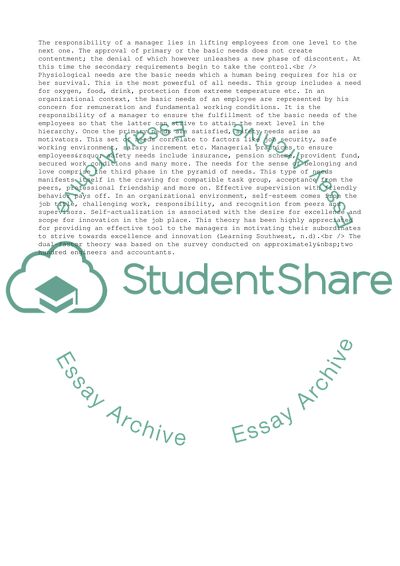Cite this document
(Maslows Theory of Motivation, Herzbergs Two Factor Theory, Alderfers Coursework, n.d.)
Maslows Theory of Motivation, Herzbergs Two Factor Theory, Alderfers Coursework. Retrieved from https://studentshare.org/management/1562394-at-the-end-of-the-day-competition-is-the-only-thing-that-motivates-the-theories-revisited
Maslows Theory of Motivation, Herzbergs Two Factor Theory, Alderfers Coursework. Retrieved from https://studentshare.org/management/1562394-at-the-end-of-the-day-competition-is-the-only-thing-that-motivates-the-theories-revisited
(Maslows Theory of Motivation, Herzbergs Two Factor Theory, Alderfers Coursework)
Maslows Theory of Motivation, Herzbergs Two Factor Theory, Alderfers Coursework. https://studentshare.org/management/1562394-at-the-end-of-the-day-competition-is-the-only-thing-that-motivates-the-theories-revisited.
Maslows Theory of Motivation, Herzbergs Two Factor Theory, Alderfers Coursework. https://studentshare.org/management/1562394-at-the-end-of-the-day-competition-is-the-only-thing-that-motivates-the-theories-revisited.
“Maslows Theory of Motivation, Herzbergs Two Factor Theory, Alderfers Coursework”. https://studentshare.org/management/1562394-at-the-end-of-the-day-competition-is-the-only-thing-that-motivates-the-theories-revisited.


